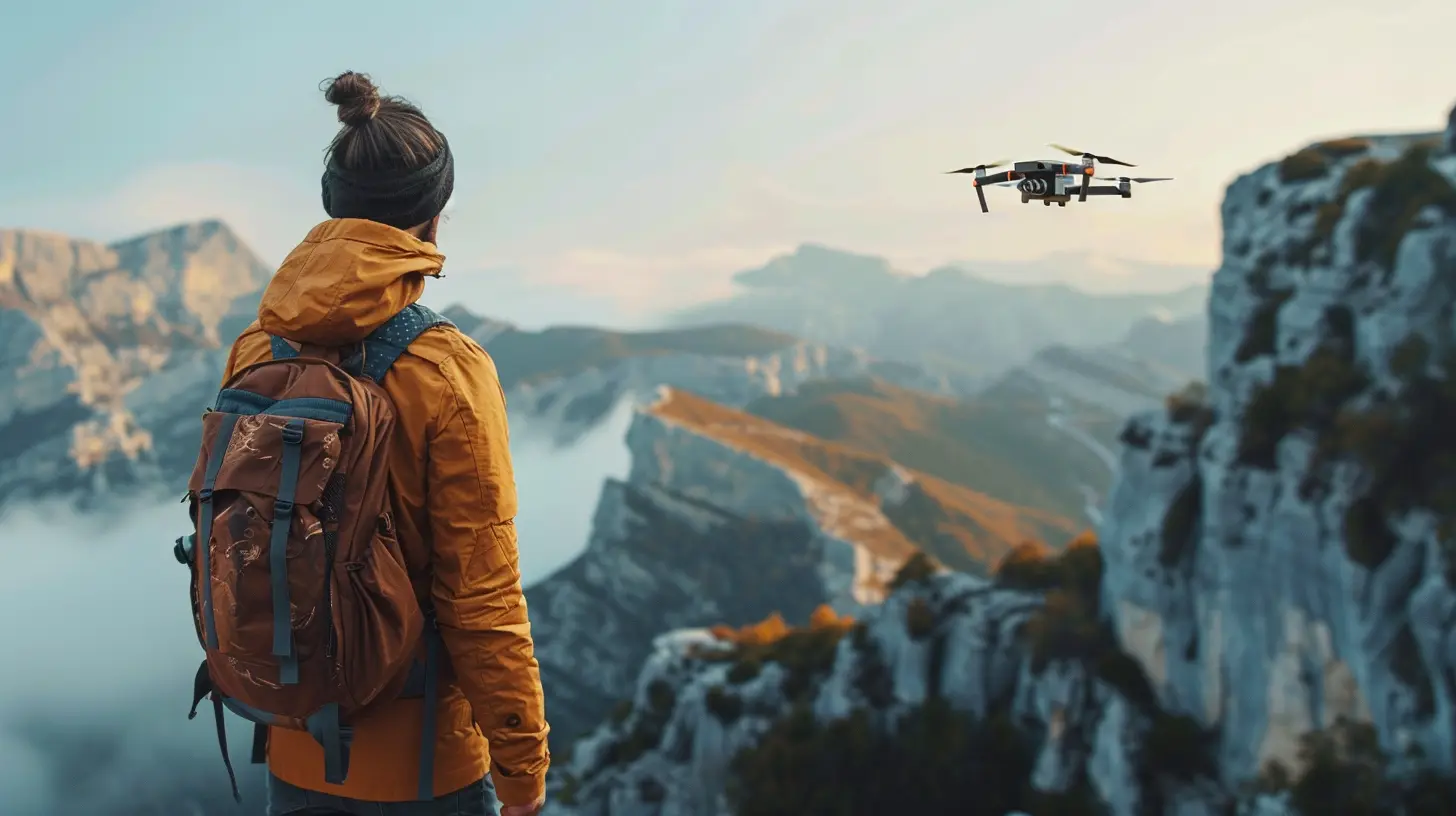How to Master Drone Flying for Professional Aerial Videography
25 October 2025
Drones have revolutionized videography, making it easier than ever to capture breathtaking aerial shots that once required expensive helicopters. Whether you're an aspiring filmmaker, a real estate photographer, or just someone who loves cinematic visuals, mastering drone flying is essential to taking your videography to the next level. But let's be honest—flying a drone isn’t as simple as holding up a camera and hitting the record button. It takes skill, patience, and a deep understanding of how drones work.
So, how do you transform from a shaky beginner to a confident drone pilot capable of capturing stunning professional footage? Buckle up, because this guide is going to walk you through everything you need to know!
1. Choose the Right Drone for Videography
Before you start flying, you need the right tool for the job. Not all drones are created equal, and if you're serious about professional aerial videography, you should invest in a drone that delivers high-quality footage.Key Features to Look For:
- Camera Quality – At minimum, you want a 4K-capable camera for crisp, detailed shots.- Stabilization – A gimbal-stabilized camera ensures smooth footage, even in windy conditions.
- Flight Time – Look for a drone with at least 25–30 minutes of flight time per battery charge.
- Intelligent Flight Modes – Features like ActiveTrack, Waypoints, and Orbit Mode can help capture cinematic shots effortlessly.
- Obstacle Avoidance – Essential to prevent crashes and keep your drone in one piece.
Some of the top drones for professional videography include the DJI Mavic 3, Autel EVO II Pro, and DJI Air 3. 
2. Learn the Rules and Regulations
Before launching your drone into the skies, familiarize yourself with the drone laws in your country. Every region has different rules, and violating them could result in hefty fines—or worse, confiscation of your drone.Key Legal Considerations:
- Register Your Drone – In most countries, drones above a certain weight must be registered.- Follow No-Fly Zones – Airports, government buildings, and national parks often have airspace restrictions.
- Keep Your Drone Within Line of Sight – This ensures better control and safety.
- Respect Privacy – Filming people without permission can land you in trouble.
If you're in the U.S., check with the FAA (Federal Aviation Administration). If you're in Europe, the EASA (European Union Aviation Safety Agency) oversees drone regulations. 
3. Practice, Practice, and More Practice
Your first drone flight won’t look like a Hollywood movie scene. In fact, it might look like a toddler learning to walk—awkward, wobbly, and full of sudden drops. That’s completely normal!Start with basic maneuvers before attempting complex shots.
Beginner-Friendly Exercises:
- Takeoff and Landing – Hover in place and smoothly land without bouncing.- Forward, Backward, Sideways Flying – Helps develop directional control.
- Figure Eight Movements – Enhances control precision for smoother shots.
- Orbit Around a Subject – Test your ability to keep a subject centered.
The more time you spend practicing, the more natural flying will feel. Just like riding a bike, it becomes second nature with enough repetition! 
4. Master the Art of Smooth Camera Movements
Smooth footage separates amateur drone shots from professional-level aerial cinematography. Quick, jerky movements can ruin your video, making it look unstable and rushed.Tips for Silky-Smooth Footage:
- Use Slow and Steady Movements – The best cinematic shots have gradual motion.- Adjust Gimbal Sensitivity – Lower sensitivity prevents rapid camera tilt shifts.
- Use Tripod Mode – This feature slows down drone movements for better control.
- Make Subtle Joystick Adjustments – Avoid full-throttle movements; ease into directional changes.
Think of your drone as a floating camera crane—slow, controlled movements create mesmerizing shots.
5. Utilize Intelligent Flight Modes
Modern drones come packed with smart features that make capturing professional footage easier. Learning how to use them effectively can elevate your videography game instantly.Useful Flight Modes for Videographers:
- ActiveTrack – Auto-follow subjects while keeping them in the frame.- Point of Interest – Orbit around a subject for dynamic, circling shots.
- Waypoint Navigation – Set a pre-planned path for autonomous filming.
- Dolly Zoom – Creates the trippy "Hitchcock effect" for dramatic scenes.
These modes do a lot of the heavy lifting, allowing you to focus on composition and creativity.
6. Master Composition and Lighting
Even if you have flawless drone piloting skills, poor composition and lighting can ruin a shot. Filming from the sky offers stunning perspectives, but you still need to frame your shots intentionally.Composition Tricks for Stunning Shots:
- Rule of Thirds – Align subjects along gridlines for visually balanced shots.- Leading Lines – Roads, rivers, or buildings can guide the viewer’s eye.
- Foreground Elements – Adding depth makes shots more engaging.
Lighting Conditions:
- Golden Hour (Sunrise & Sunset) – Delivers soft, cinematic lighting.- Overcast Days – Reduces harsh shadows for balanced exposure.
- Avoid Midday Sun – Direct overhead light can create unflattering contrasts.
Flying during the right lighting conditions can make a world of difference in your footage.
7. Edit Like a Pro
Post-production is where your aerial footage truly comes to life. Raw drone footage can look flat, but with the right editing techniques, it transforms into a masterpiece.Editing Essentials:
- Color Correction & Grading – Adjust colors for a cinematic look.- Stabilization – Even with a gimbal, some shots may need slight stabilization.
- Speed Ramping – Smoothly transition between fast and slow motion for dramatic effect.
- Sound Design – Add ambient sounds and music to bring your footage to life.
Software like Adobe Premiere Pro, DaVinci Resolve, and Final Cut Pro are great tools for editing drone footage.
8. Keep Safety a Priority
No shot is worth risking your drone—or worse, injuring someone. Always prioritize safety when flying.Safety Guidelines:
- Check Weather Conditions – Avoid flying in strong winds or heavy rain.- Keep an Eye on Battery Life – Always leave enough juice for a safe return.
- Have a Spotter – If flying in complex environments, a second pair of eyes helps.
- Know Your Emergency Procedures – Learn how to regain control in case of a malfunction.
A safe drone pilot is a happy drone pilot. No one wants to see their $2,000 drone crash into a tree!
9. Build a Portfolio and Start Earning!
Once you've honed your skills, why not turn your passion into a business? Professional drone videography is in high demand across industries like real estate, tourism, and event coverage.How to Get Started:
- Create a Showreel – Showcase your best work in a short demo video.- Offer Free Work Initially – Build your portfolio with real-world projects.
- Network with Local Businesses – Real estate agencies, travel companies, and production studios all need aerial footage.
- Get Certified – Some industries require licensing (such as FAA Part 107 in the U.S.).
With dedication, your drone videography skills can turn into a profitable career or side hustle.
Final Thoughts
Mastering drone flying for professional aerial videography isn’t just about pressing record and hoping for the best. It’s about precision, creativity, and continuous learning. The more you practice, the better you get—so don’t be afraid of making mistakes!With the right drone, knowledge of regulations, smooth control techniques, and strong editing skills, you'll be well on your way to capturing jaw-dropping aerial footage. Now, grab your drone, head outside, and start shooting—because the sky is literally the limit!
all images in this post were generated using AI tools
Category:
DronesAuthor:

Adeline Taylor
Discussion
rate this article
1 comments
Brick Cannon
Ah, yes, because mastering drone flying is just as easy as learning to ride a bike… if the bike had four propellers, could plummet from the sky, and required a degree in engineering. Good luck!
November 4, 2025 at 4:48 AM

Adeline Taylor
Absolutely, drone flying has its challenges, but with practice and the right guidance, it can become manageable and rewarding!


